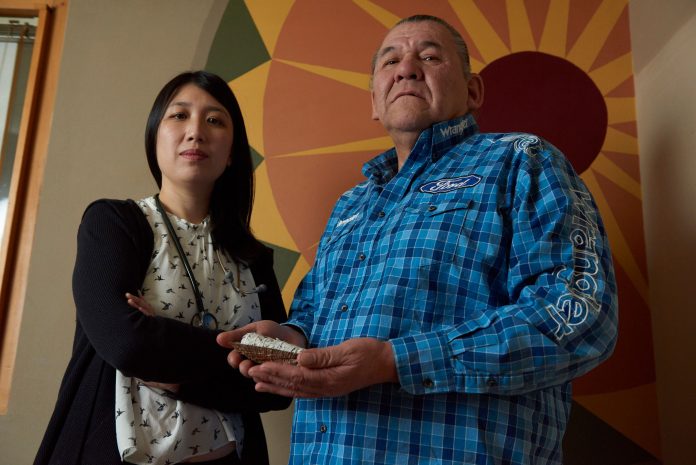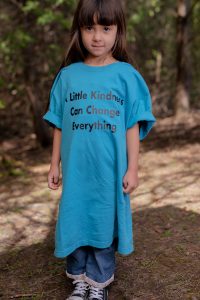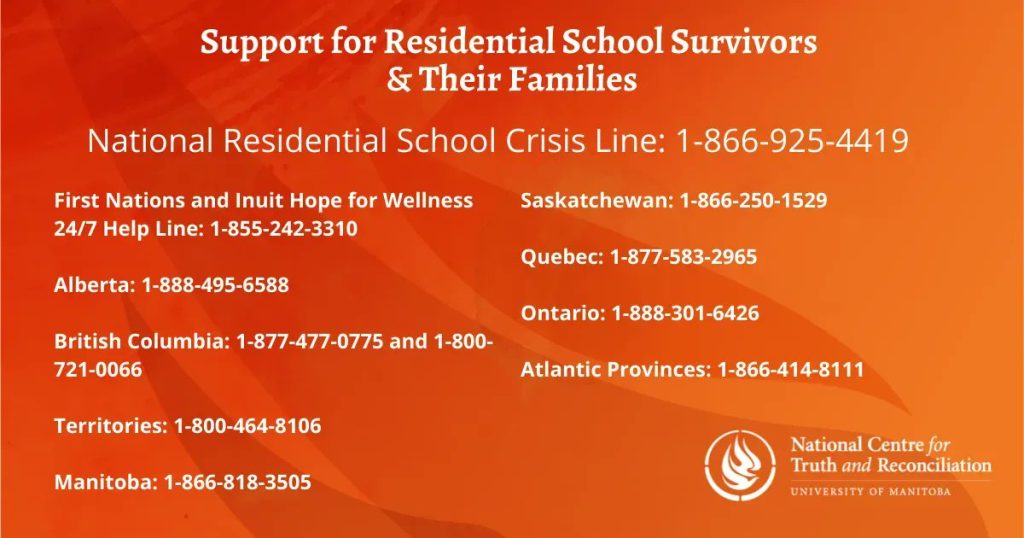
Today marks the National Day for Truth and Reconciliation, offering Canadians the opportunity to get educated about Indigenous history while also supporting crucial efforts on the road to reconciliation.
The day of recognition, long known as Orange Shirt Day, aims to raise awareness about residential schools and the impact they had on Indigenous individuals and communities. Starting in the late 1800s and extending until 1997, the government took native children from their families and placed them in schools that sought to erase their Indigenous identity. Thousands of children died within the walls of the institutions, and the detrimental impact on survivors has created generations of trauma. That’s something organizations like the Anishnawbe Health Foundation are working to combat.
“One of the things that is very different about Anishnawbe Health from other community health centres is that it brings in traditional Indigenous health care principles, the idea of finding balance in mind, body, spirit and emotion and also having access to traditional healers, counselors, ceremony, medicines,” said Julie Cookson, executive director of the Anishnawbe Health Foundation. “All the work at the health centre is grounded in those principles.”
The foundation receives some funding through the Ministry of Health, which provides day-to-day operational support. However, like many other health care organizations, they still need to fundraise to cover the costs of long-term projects. The foundation’s new centre is one of those projects, and it’s currently under construction on Cherry Street in Toronto with an expected completion date late next year.
The facility will help them serve over 90,000 Indigenous people who live in Toronto, and many of their clients have connections to First Nations communities in Muskoka and other parts of Ontario. They’ve also launched an online teaching series called Wisdom Weavers for people who can’t make it to classes or live outside the GTA.
The suppression of Indigenous healing practices in residential schools and other settings has left a dwindling number of healers to carry on traditions, Cookson said. One of the goals for the new health centre is to develop a training program for Osh-ka-be-Wis, which are traditional helpers that support healers.
The program aims to help elders pass their knowledge onto the next generation, and donor support can help with that preservation and reclamation of healing practices, she said. For people who don’t have any extra cash to share, leaving a legacy gift in their will is a great way to support Indigenous charities and communities into the future.

“We’re asking people to consider Indigenous-led causes in their will because a lot of the opportunity for people like me who are settlers on this land has come at the expense of resources going to Indigenous peoples,” Cookson said. “It’s a way for us to reset that balance and to give back in some way.”
Donations to Indigenous-led causes make up about 3 per cent of online donations and less than 1 per cent of institutional donations, said Laurie Fox, campaign director of Will Power. The Canadian Association of Gift Planners launched the Will Power campaign to bring more attention to the impact of leaving legacy gifts.
“Here in Canada, we’ve all been trained to give from the cash that we have on hand, to donate from our current resources,” Fox said. “Many Canadians don’t know or they don’t realize that there are other more strategic ways to give that can make a really big difference, like giving through your will, for example.”
Only five per cent of Canadians currently give through their will, and it’s not necessarily the wealthy people some might expect. People like retired teachers and nurses have left as much as $35,000 to charities simply by pledging one per cent of their estate. It’s a larger gift than most people can make during their lives, and 99 per cent still goes to their family.
The process is simple as well. After choosing a charity, or multiple charities, donors simply need to include a clause in their will stating their intent. If they’ve already written their will, they only need to add one paragraph, and many charities offer prepared statements that donors can simply drop into the existing text.
“It’s really not about being wealthy. It’s really not about the size of your estate,” Fox said. “It’s about giving in a meaningful way, creating that legacy and doing more than you might be able to do during your lifetime.”
Will Power offers a legacy calculator on its website to help Canadians see what their donation could look like. In addition to making financial contributions, one of the best ways to recognize Orange Shirt Day is by getting educated, and better yet, making a plan.
The Truth and Reconciliation Commission of Canada (TRC) was created as a result of the Indian Residential Schools Settlement Agreement, which was the largest class-action settlement in Canadian history. As part of their mandate, the TRC created a report detailing the history of residential schools and offering calls to action to help work toward reconciliation.
Many Canadians have not read the TRC’s 94 Calls to Action, even seven years after their release, prompting the National Centre of Truth and Reconciliation (NCTR) to launch their #94in94 Campaign. Each day, the NCTR and its partners will highlight one of the calls to action, challenging individuals and organizations to choose at least one.
Beyond that, the NCTR offers step-by-step tips and samples on how to create a ReconciliACTION plan. There are many ways to honour Orange Shirt Day, but it all comes down to truth as the foundation for reconciliation, said NCTR Executive Director Stephanie Scott in a press release. Canadians need to learn and teach the truth so that survivors can heal and communities can rebuild.
“Today, we ask people in Canada to think about the role you can play in reconciliation,” Scott said. “Listen and ask questions, take the truths you learned this week and champion them in your life and in your community.”
To learn more, visit the National Centre of Truth and Reconciliation website.








